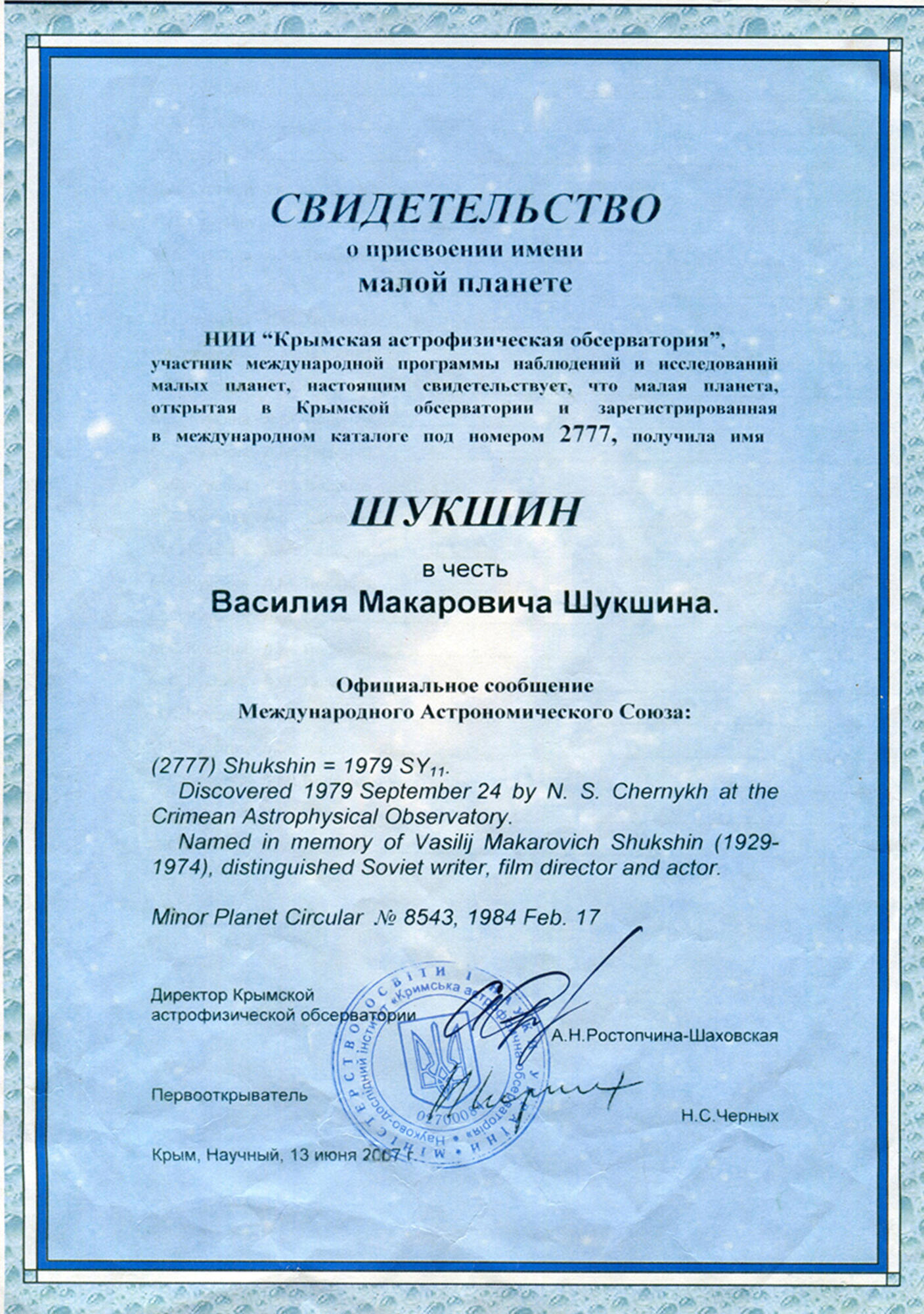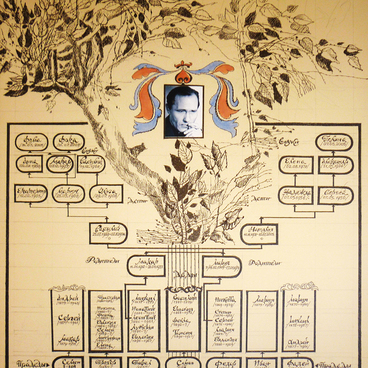A minor planet was discovered in the Crimean Astrophysical Observatory on the 24th of September, 1979. It was given the number 2777 in the International Catalogue of Celestial Objects. The planet, 6 to 14 kilometres in diameter, was named after the director, actor and writer Vasily Shukshin. The naming certificate is part of the museum preserve’s collection.
This celestial body was found by Doctor of Physical and Mathematical Sciences, Lead Expert in astrometry and dynamics of minor objects in the Solar System Nikolay Chernykh. He worked as a Scientific Officer at the Crimean Astrophysical Observatory. In addition to research, Chernykh was engaged in a noble and necessary effort — he assigned the names of famous and outstanding people to minor planets.
Minor planet (or an asteroid) is a celestial body that revolves around the sun in its own orbit and reflects its light. The greatest concentration of such bodies is observed between the orbits of Jupiter and Mars — they constitute the asteroid belt of the Solar System. Since minor planets are small in size, they cannot be seen with the naked eye. They are observed with special telescopes, called astrographs. Their power exceeds the capabilities of the human eye by approximately 60,000 times. With the help of such a device, objects with a diameter of less than five kilometres, which are located in the central part of the asteroid belt, can be examined.
According to scientists, the total number of minor planets with a diameter of one kilometre in the Solar System can reach two million. The diameter of the largest currently known asteroid in the solar system, Ceres, ranges from 909 to 975 kilometres. The other two largest celestial bodies, Vesta and Pallas, reach five hundred kilometres in diameter. Moreover, Vesta is the only minor planet that is constantly visible from the surface of the Earth with the naked eye. Some other asteroids can also be seen without special instruments, but only during the period when they pass along the segments of their own orbit that are closest to our planet.
This celestial body was found by Doctor of Physical and Mathematical Sciences, Lead Expert in astrometry and dynamics of minor objects in the Solar System Nikolay Chernykh. He worked as a Scientific Officer at the Crimean Astrophysical Observatory. In addition to research, Chernykh was engaged in a noble and necessary effort — he assigned the names of famous and outstanding people to minor planets.
Minor planet (or an asteroid) is a celestial body that revolves around the sun in its own orbit and reflects its light. The greatest concentration of such bodies is observed between the orbits of Jupiter and Mars — they constitute the asteroid belt of the Solar System. Since minor planets are small in size, they cannot be seen with the naked eye. They are observed with special telescopes, called astrographs. Their power exceeds the capabilities of the human eye by approximately 60,000 times. With the help of such a device, objects with a diameter of less than five kilometres, which are located in the central part of the asteroid belt, can be examined.
According to scientists, the total number of minor planets with a diameter of one kilometre in the Solar System can reach two million. The diameter of the largest currently known asteroid in the solar system, Ceres, ranges from 909 to 975 kilometres. The other two largest celestial bodies, Vesta and Pallas, reach five hundred kilometres in diameter. Moreover, Vesta is the only minor planet that is constantly visible from the surface of the Earth with the naked eye. Some other asteroids can also be seen without special instruments, but only during the period when they pass along the segments of their own orbit that are closest to our planet.



